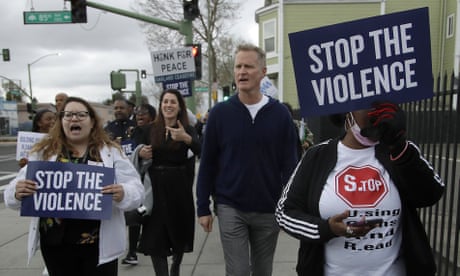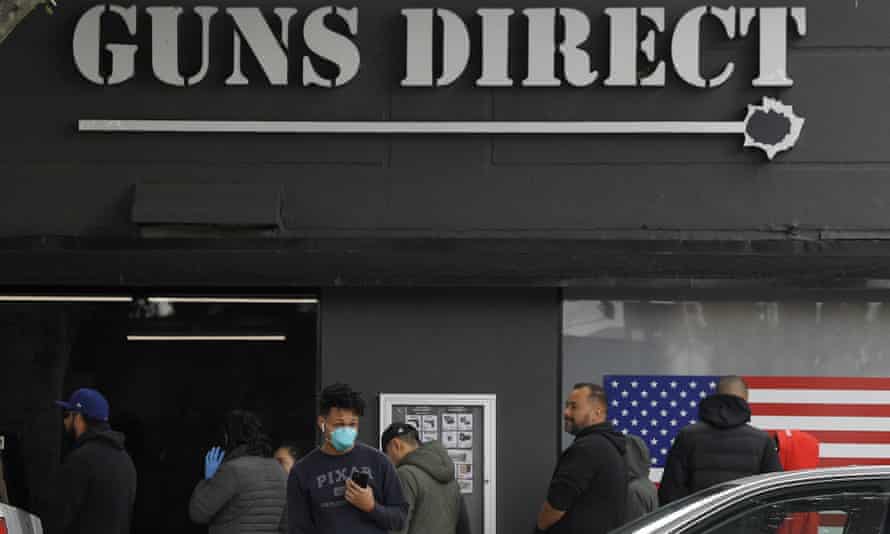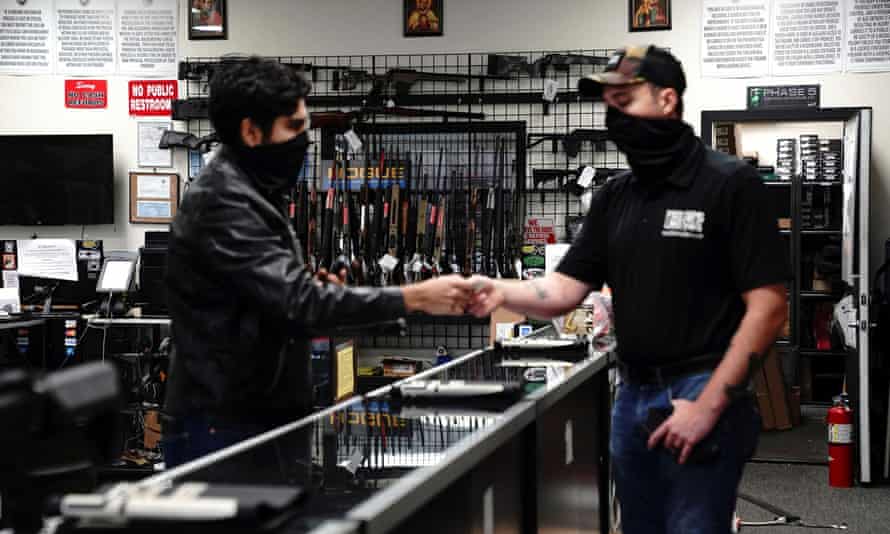Pandemic gun violence surge was not linked to rise in gun sales, study finds
Research suggests looking at role of job loss, economic change, closure of schools and community organizations and civil unrest
Gun homicides surged across the United States during the coronavirus pandemic, in the same year that Americans bought a record-breaking number of guns.
But some of America’s leading gun violence researchers have concluded that what might seem like an obvious cause-and-effect – a surge in gun buying leads to a surge in gun violence – is not supported by the data.
Through July of last year, there was no clear association between the increase in firearm purchases and the increase in most interpersonal gun violence at the state level, according to a new study published in Injury Epidemiology, a peer-reviewed scientific journal.

The findings suggest that “we need to be looking at other factors, like job loss, economic change, the closure of schools and community organizations and nonprofits, and civil unrest,” in order to understand last year’s increase in gun violence, Julia Schleimer, the lead author of the new study, said.
There did appear to be some association between the increase in gun purchasing and an increase in domestic violence gun injuries in April and May, but that correlation might also be explained by other factors, including increased substance abuse or the decreased access to domestic violence support services during the early months of lockdown, Schleimer said.
The results of the new study are an unexpected addition to the fierce political battle over how to explain last year’s estimated 25% increase in homicides, which experts say they expect will be the worst single-year increase in killings since the 1960s. While official government data is not yet available, experts are projecting that the US saw an additional 4,000 to 5,000 homicides nationwide in 2020, and the nonprofit Gun Violence Archive recorded nearly 4,000 additional gun homicides last year compared with 2019.

Even though the homicide rate across big cities remains close to half of what it was in the 1990s, some politicians have used the single-year jump in killings to paint Democrats and the Biden administration as soft on crime, using an old political playbook of stoking anxiety over crime and violence in order to win elections.
Joe Biden has responded by focusing on firearms access and calling for new gun control laws, as well as supporting increased funding for police and community violence intervention programs.
The findings of the new study from the state-funded Violence Prevention Research Program at the University of California, Davis, do not fit tidily into either of these partisan political narratives. While the new study raises doubts about a correlation between last year’s spike in gun purchases and the increases in shootings, it doesn’t address the underlying risk of easy access to guns in the US, Schleimer said.
While official government crime data is not yet available for 2020, roughly three-quarters of US homicides annually are committed with guns, and experts estimate nonfatal shootings injure 100,000 people a year, often leaving survivors with serious, life-altering injuries.
There is a large body of research demonstrating the correlation between gun access and increased risk of gun injury, Schleimer said, an association that is particularly clear when it comes to the risk of gun suicide. The increase in shootings during 2020 may have been driven by Americans who already owned guns before the pandemic, not by the people who bought guns for the first time last year – but that does not mean that gun access is irrelevant, she said.
At the same time, the lack of any clear correlation between what the researchers estimated as 4.3m additional firearm purchases nationally from March through July 2020, and a 27% increase in firearm injuries over that time, suggests that other factors besides gun access and gun control laws deserve more attention, and more research, Schleimer said.
“There are a lot of strategies that can address some of the more social determinants of violence,” Schleimer said, including supporting violence interrupters and other community-based violence intervention programs, and focusing on economic policies that might help reduce gun violence, which is deeply correlated with poverty and concentrated disadvantage. “There’s some good evidence on youth summer job programs and young people’s risk for violence.”
It made sense that politicians and other public figures would point to the increase in gun buying in 2020 as a potential reason shootings had increased last year, Schleimer said.
But, she said, “Our findings, from this current study, in this particular context, are not supporting that.”
The new study has several limitations, including the complexity of factors that might have influenced gun violence during 2020, and the lack of official data on both gun sales and gun injuries. The researchers estimated gun sales using federal background check data, and relied on shooting incident data collected from media reports by the nonprofit Gun Violence Archive.
Daniel Webster, the director of the Johns Hopkins Center for Gun Violence Prevention and Policy, said the study followed “rigorous statistical methods,” and that it raised interesting questions about whether the increase in gun violence might be more closely connected to some Americans’ willingness to carry their previously purchased guns during the pandemic, rather than a spike in first-time gun purchases.

It was possible that in some states, many of the additional gun sales in 2020 went to people who had already owned multiple firearms – meaning that the surge in sales did not necessarily contribute to an increase in the overall prevalence of gun ownership, Webster said in an email.
“Data from Chicago and some other cities suggest that we have seen a sharp increase in illegal gun carrying,” he wrote. “The role that guns are playing in the increased levels of homicides may have more to do with increases in illegal gun carrying than with the number of incidents in which people buy guns legally, especially in the short-term.”
In general, Webster wrote, the relationship between gun ownership and the increased likelihood of a shooting depended a lot on who was acquiring the gun. “In places and among individuals who are particularly low risk, more guns may have little impact on rates of lethal violence, but in places and among individuals of high risk, gun ownership can greatly increase risks of lethal violence,” he wrote.
Schleimer also cautioned that it’s possible that there might be some connection between gun purchasing and gun violence in 2020 that was masked by other factors the researchers were not able to measure or control for.
“Last year was such a unique year in many ways, and the context was continually evolving, and there were a lot of factors changing all at once, both locally and at the state level and nationally in the context of the pandemic and social and civil unrest,” Schleimer said. “That really complicated what we were able to do analytically.”
To examine the possible link between gun sales and shootings, the UC Davis researchers looked at trends in gun purchasing, and gun injuries, across 48 states, and then examined whether there was a correlation between the number of additional guns purchased and the number of additional gun injuries during the spring and summer. They controlled for a range of state-level factors that might influence the number of gun injuries, including stay-at-home orders, coronavirus cases and deaths, unemployment, measures of racial tension and civil unrest and seasonal variations in rates of gun injury.
While an early analysis from the same researchers, looking only at March through May, had found a correlation between increased gun purchases and gun injuries, their final analysis did not find any clear pattern between how many additional guns were purchased in a state through July 2020 and how much of an increase the state saw in non-domestic violence firearms injuries. The study did not analyze gun suicides or suicide attempts.

